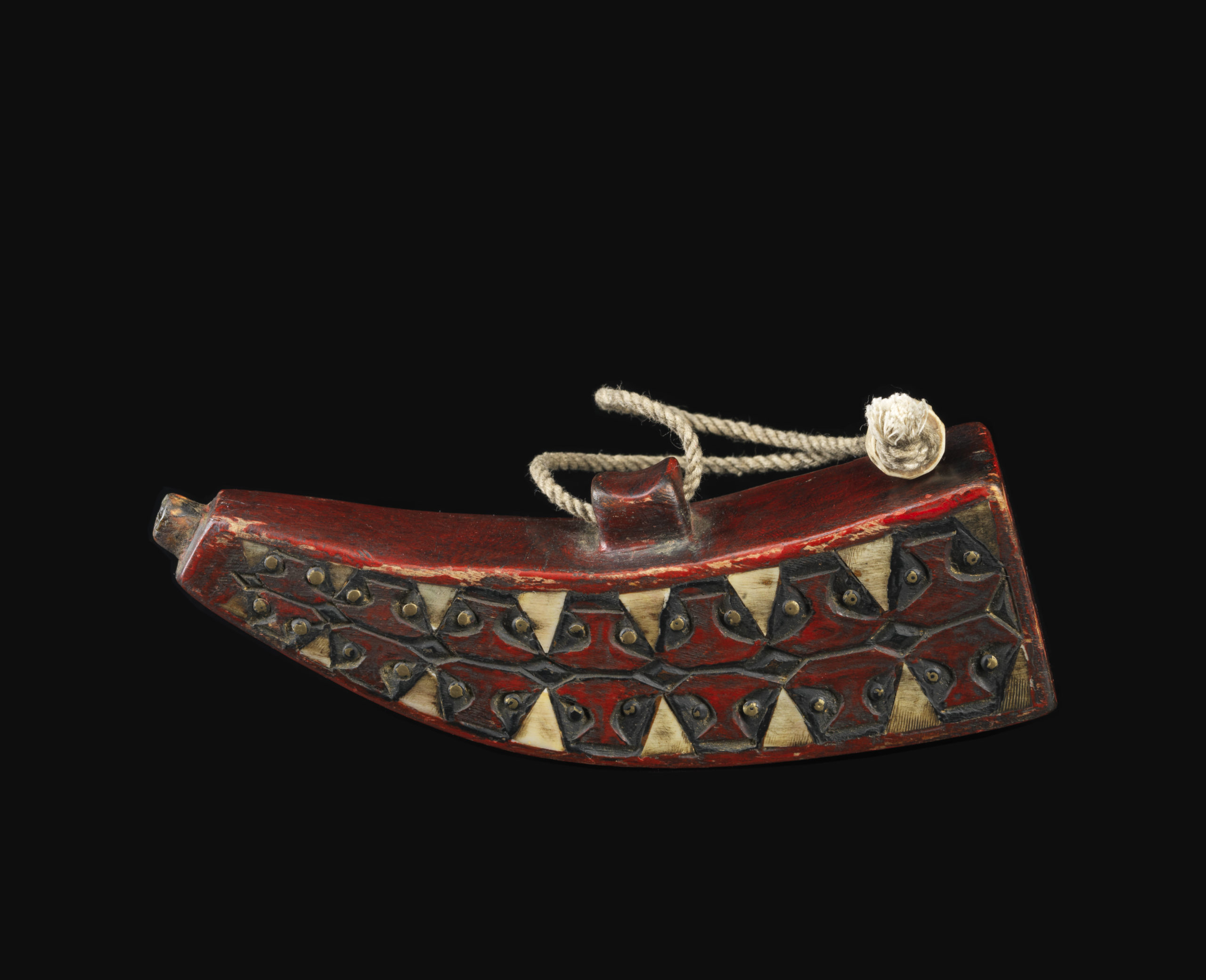Powder Horn
This powder horn of the paiwan is carved from one piece of wood and decorated with red and black lacquer on both sides. On both sides small triangles of mother-of-pearl are inlaid, each with small brass nails next to the mother-of-pearl pieces. On the front side there is a small opening for the gunpowder, on the top side there is a wooden eyelet for fastening to the belt or rifle.
On Taiwan muzzle loading rifles have been known for centuries. Especially in the south of Taiwan, muzzle-loader shooting has a long tradition. Even though the rifles, which technically go back to the hook-action rifle (arquebus) of the 16th century, were very cumbersome to handle, they had twice to four times the range of traditional weapons and gave invaders the impression of modern weapon technology. They could also be better used for defence from fortified positions than the traditional crossbow, which had been known since the Han period due to Chinese influences. The Paiwan tribes, among whom these weapons were relatively widespread, were considered very defensive and could never be suppressed until the Japanese colonial period. These rifles were in use until the early 20th century. The rifle barrels and breech mechanism were first of Portuguese or Dutch origin and later, in the 19th century, of Chinese origin and were fitted with a locally developed and produced type of wooden stock.
Producers of this powder horn, the Paiwan, which are divided into a number of smaller ethnic groups, were pushed up into the higher inland areas from the 17th century onwards by subsequent Chinese invaders over the centuries. Here, however, one should not actually speak of “conquest” or invasion, but rather of overlapping and ethnic shifts. In the 17th century, the Dutch colonialists referred to the area around the Fort Zeelandia (Tainan), which they built between 1624 and 1634, as “Tayowan” or “Tayovan”. The Chinese characters for “Taiwan” mean “Terrace Bay”. Most Paiwan live in the mountains of southern Taiwan. Their settlement area extends from the Damumu Mountains in the Taiwanese central mountains in the north to the southern tip of the island, and east of the mountains to the coast of Taitung County. The Paiwan believe that they came from Paiwan in the Dawu Mountains in Formosa and then migrated south. The name “Paiwan”, which refers to the sacred ancestral land, was then applied to the emigrants. According to other sources, paiwan simply means “man”.
The Paiwan number almost 100,000 people and make up almost one fifth of the indigenous population of Formosa. Like the Atayal in the north, who have a somewhat different habitus externally and in terms of their material and spiritual culture, they have resisted external aggressors quite efficiently, taking advantage of the inaccessible geography, and have never really been able to be appropriated.
| Object | Powder horn |
| Culture | Formosa/South, Paiwan Rukai groups (possibly Pingpu) |
| Time | 19th century |
| Dimensions | H 3.90 cm, w: 2.60 cm, l 14 cm |
| Material | Wood, lacquer, mother of pearl, brass, string |




